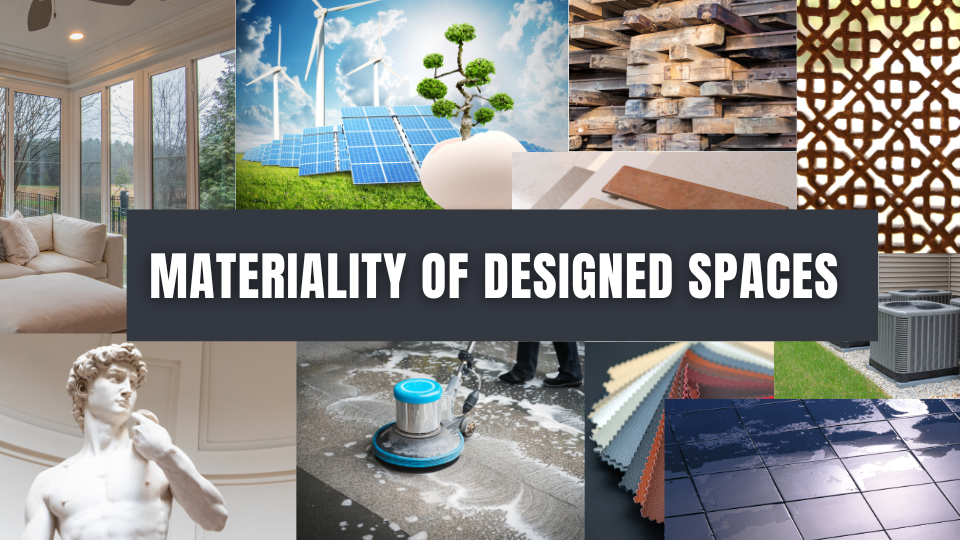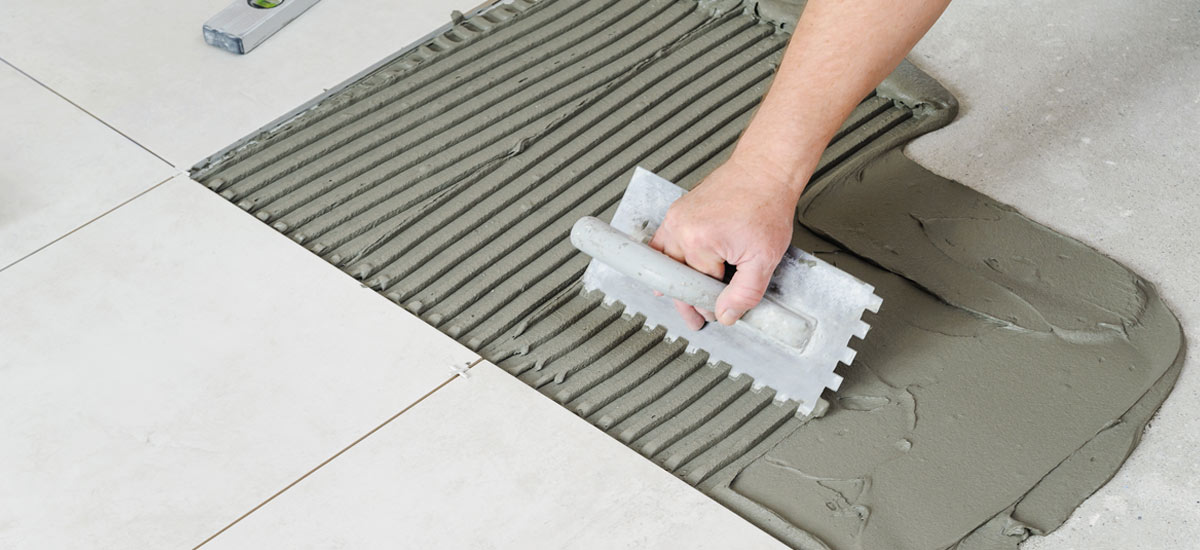Exploring the World of Materials for Designed Spaces: The choice of materials is a critical decision for any architect or interior designer. The right materials significantly impact the overall look and feel of a project.
“Material selection is paramount in architecture and interior design. The right materials enhance aesthetics, function and durability are no secret. Materiality has become even more important when concerns like indoor air pollution and sustainability have become very important,” says Dinesh Vyas, co-founder, ON THE FLOOR (OTF).
In this blog, we will explore the world of materials for designed spaces.
A. Materials
There are a wide variety of materials that can be used in designed spaces. Some of the most common materials include:
1. Wood
Wood is another popular material for flooring, walls, and furniture. It is warm and inviting and can be used to create a variety of styles.
2. Natural Stone
Stone is a durable and natural material that can be used for flooring, walls, and countertops. It is available in a variety of colors and textures and can be used to create a variety of looks.
3. Metal
Metal is a modern and sleek material that can be used for flooring, walls, and furniture. It is durable and easy to clean and can be used to create a variety of looks.
4. Textile and Fabric
Textiles are a soft and warm material that can be used for flooring, walls, and furniture. They are available in a variety of colors and patterns and can be used to create a variety of looks.
5. Ceramic Tiles
Ceramic tiles are most accepted and popular wall and floor coverings for over a century. Modern ceramic tiles, particularly large size, porcelain tiles have emerged as one of the best flooring options. The favorable factors include – range of aesthetics including tactility, function-specific options, affordable, and above all, sustainability. Tiles are much more sustainable and eco-friendly options when compared to natural stones on one hand and synthetic alternatives on the other.
Read this Article also: Paints: Colour Dilemma to Quality Concerns, While Choosing Paints!

6. Organic and Sustainable Flooring
Bamboo flooring, Linoleum flooring and cork-flooring are being revisited by the Global designer community. Barring cork, the two options are gaining popularity in India too. Linoleum was invented much before the synthetic material PVC and other similar ones, but then it got almost lost till recent when its organic nature (made from linseed oil) and sustainability factor caught attention. Bamboo (technically a grass!), is a wood substitute which can be cultivated in minimum tile. There are specifies where the plant is ready for consumption in just 3years!
7. Synthetic Floor and Wall covering
Materials like SPC (stone polymer composite), WPC (wood polymer composite), LVT (luxury vinyl tile) are considered when speed and ease of flooring installation is the need.
8. Glass
Glass is a transparent material that can be used for flooring, walls, and windows. It is light and airy and can be used to create a variety of looks.
B. Properties
When selecting materials for a designed space, it is important to consider the following properties:
- Durability: How long will the material last?
- Maintenance: How easy is the material to clean and maintain?
- Sustainability: Is the material environmentally friendly?
- Cost: What is the cost of the material?
- Aesthetics: How does the material look and feel?

“The optimal selection of materials for a designed space necessitates a harmonious equilibrium between aesthetics, functionality and sustainability. While visual appeal is essential, materials must also fulfill the practical requirements of the space to achieve a cohesive and successful design. Sustainability needs no explanation for the designer community” says Dinesh Vyas, the building material Industry expert.
Buy this Book: MODERN CERAMIC TILES: A Handbook for Professionals
C. Using Materials for Designed Spaces
There are a variety of ways to use materials in designed spaces. Some common uses include:
- Flooring: Flooring is the foundation of a space, and it can have a significant impact on the overall look and feel of a room.
- Walls: Walls can be used to create a variety of looks, from simple and understated to bold and dramatic.
- Furniture: Furniture can be used to add personality and style to a space.
- Accessories: Accessories can be used to add finishing touches to a space.
Tips for Selecting and Using Materials for Designed Spaces
Here are some tips for selecting and using materials:
- Consider the function of the space.
- Think about the desired look and feel.
- Choose materials that are durable and easy to maintain.
- Consider the budget.
- Be creative and experiment with different materials.
Read this Article also: Empowering Future Designers: Integrating Flooring Material Education in Curricula
D. Compatibility of Materials in a Designed Space
When selecting materials for a designed space, it is important to consider not only the individual properties of each material but also their compatibility with one another. Materials that are not compatible can lead to problems such as cracking, warping, or discoloration.
Dinesh Vyas states, “Material compatibility is a critical, yet often neglected aspect of design. The differential properties of materials in terms of expansion, contraction, and moisture response necessitate careful consideration. Harmonizing these attributes is essential to prevent structural and aesthetic compromises over time.”
You may Like this: Flooring Challenges in India: Pretty Pictures, Poor Choices in Flooring

Consider factors while exploring materials for Designed Spaces.
- Expansion and Contraction: Different materials expand and contract at different rates. This can lead to problems, if materials are not properly supported or if they are used in combination with materials that have significantly different expansion and contraction rates.
- Moisture Sensitivity: Some materials are more susceptible to moisture damage than others. It is important to select materials that are compatible with the expected moisture levels in a given space.
- Chemical Compatibility: Some materials may react negatively with each other when they come into contact. This can lead to corrosion, staining, or other damage.
- Fire Resistance: Different materials have different fire resistance ratings. It is important to select materials that are compatible with the fire safety requirements of a given space.
- Aesthetics: Even if materials are compatible from a technical standpoint, they may not be compatible from an aesthetic standpoint. It is important to select materials that complement each other and create a cohesive look.
By carefully considering the compatibility of materials, you can help to ensure that your designed space is both functional and aesthetically pleasing.
Read this Article also: 9 Trendsetting Floors: Top Trends in Flooring Options that Shine
The choice of materials is a critical decision for any architect or interior designer. By carefully considering the function of the space, the desired look and feel, and the budget, you can select materials that will create a beautiful and functional space.
We hope that this blog has provided you with some helpful information about materials for designed spaces. We encourage you to explore the world of materials and find the perfect materials for your next project. Please subscribe for the newsletter which will be started soon. Thank you.
You may Like this: Flooring A Sustainable Future
Subscribe to our newsletter!


